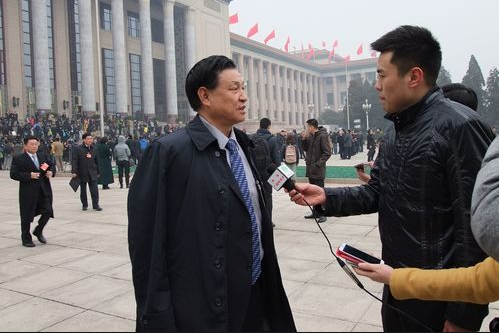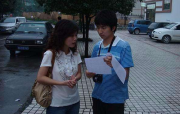本篇文章2955字,读完约7分钟
hallux
脚趾
itstemsfromlatinandbegantobecommonlyusedinthemid-19 th century。 on the opposite side (of the foot ),the little toe is called the minimus。
起源于拉丁语,在19世纪中叶开始普遍使用。 与此相对,小指被称为迷你马克斯。
purlicue
“虎口”距离(食指和拇指之间的空间隙)
although a rare word,purlicueisatermforthespacebetweentheforefingerandthumb,originalyusedinthenorthofengland。 it ' sthoughttoderivefromthescotstermpirlie,meaning'curly'or'twisted ',andisalsousedasasynonymforcurlicue:aterm CIN
虽然很冷淡,但purlicue一词的意思是食指和拇指之间的空,在英格兰北部是第一个使用。 这个词来自苏格兰术语pirlie,意味着“卷曲”或“弯曲”。 现在被用作“花体”的同义词、书法用语,用于形容书写者笔迹的卷曲。
fraenum
系带子
afraenumisasmallligamentthatrestrictsmovementbetweenbodyparts。 themostobviousexampleisthefraenumwhichattachesthetonguetothebottomofthemouth,or the lip to the gum。 itcomesfromthelatinfraenumwhichmeant ' bridle '–thatsameideaofrestrainedmovement。 it is also spelled frenum,and the more common term is frenulum。

绳子是小韧带,限制身体部位的运动。 最常见的例子是舌头和口底,连接嘴唇和牙龈的舌饰。 系带一词来源于拉丁语中的fraenum,意思是“缰绳”,与限制行动同义,也写成“frenum”,更一般的用语是FREN UUM。
uvula
小舌
theuvulaisthefleshyextensionthangsatthebackofthemouthabovetheopeningofthethroat。 thisisabodypartthatwesharewithsomeotherprimates; for instance,baboons have small,underdeveloped uvulae。 theuvulahelpstoclosethenasopharynxduringswallowing,sothatnofoodcanenterthenasalpassage。 italsocausestheinitiationofthegagreflexifstimulated,andisalsousedtoarticulatearangeofsoundsinspeech,suchastheguturalsed

小舌是嘴的后部,紧贴着喉咙向上挂的部分。 这个身体部位还有其他灵长类动物。 比如狒狒虽然小型,但有发育不完全的舌头。 舌头在吞咽时关闭鼻咽,有助于避免食物进入鼻道。 受到刺激时,舌头会引起咽喉反射。 舌头也可以发出法语喉音r那样的一连串声音。

飞利浦大酒店
在人群中
thistermreferstotheverticalgroovebetweenthebottomofthenoseandtheupperlip。 interestingly,itcomesfromthelatinwordphiltrumwhichinitialymeant‘love-potion‘or’love-charm’andonlystartedbengusion
这个术语是指鼻子底部和上唇之间垂直凹陷的部分。 有兴趣的是来自拉丁语的philtrum,最初的意思是“爱迷药”和“爱的魔法”,直到17世纪才开始用于英语,表示身体的部位。
碗状(双手靠在一起形成)
thisisthehollowthatisformedwhenthetwohandsareplacedtogethertocreateabowlshape。 itoriginatesfromtheoldnorsegaupn。
这个词是指双手合十的碗状时双手凹陷的部分,来源于古挪威语的gaupn。
gynaecomastia
男性乳房
thetechnicalmedicaltermforwhatsomemightrefertoineverydayconversationas ' man boobs ' or ' moo bs '–or、rather、theconditionthatcauss
这个专业用语是日常会话中所说的“男性乳房”,更正确地说,是引起男性胸部组织肿胀、隆起的条件,多是激素疗法和内分泌失调引起的。
canthus
眼角
stemming from latin,and from the greek word kanthos,thiswordreferstothepointintheinneroroutercorneroftheeyewheretheupperandlorwer it
源于拉丁语和希腊语中的kanthos一词,指内外眼角上下眼皮的交叉点。 最初用于17世纪中叶。
gnathion
下巴下面
thisisthelowestpointofthejawbone,sothemostoutwardpointingpartofthechin。 itcomesfromthegreekwordfor‘jaw’with the–ionsuffixaddedtoit,Andonlycameintousageinthelate 19 th century。
下颌骨的最低点,下巴突出到最外侧,这一点来自希腊语jaw一词,加上-ion后缀直到19世纪末期才开始被采用。
glabella
印堂
theglabellaisthesmoothpartoftheforehead,betweenanddirectlyabovetheeyebrows。 the term comes from the latin glaber,meaning ‘without hair,smooth,bald’。 itisusedmedicallytotestfordehydration,astheskinbecomeswrinkledandshrivelledwhendehydrated。
额头之间有点高又平的部分。 这个用语来源于拉丁语的glaber,意思是“没有毛,平坦,光秃秃”。 医学上用来测试有无脱水。 因为脱水时皮肤会收缩,产生皱纹。
(资料来源:沪江英语,: helen )
来源:简阳新闻
标题:【要闻】这十个身体部位的词 你可能不知道()
地址:http://www.jycdb.com/jyjy/16653.html

